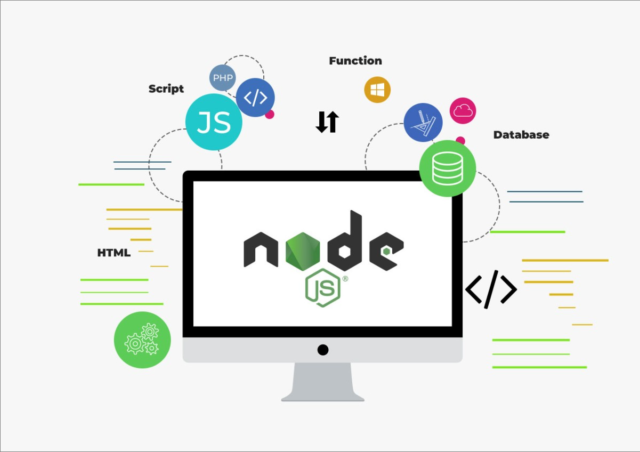Node.js, a runtime built on Chrome’s V8 JavaScript engine, has revolutionized server-side programming since its inception in 2009. As 2023 unfolds, developers and tech enthusiasts are keenly observing the trends and advancements shaping the future of Node.js development. Several key trends and expected developments can be anticipated to influence the landscape of Node.js in 2023.
1. Enhanced Performance and Efficiency
In 2023, significant strides are expected to be made in optimizing the performance and efficiency of Node.js. The continuous improvements in the V8 engine will contribute to faster execution times and better memory management. Additionally, the adoption of WebAssembly (Wasm) is likely to play a crucial role. WebAssembly allows code written in multiple languages to run on the web at near-native speed, thereby enhancing the performance of Node.js applications.
2. Increased Adoption of Serverless Architectures
Serverless computing, which abstracts server management from developers, has gained momentum in recent years. In 2023, Node.js is expected to be increasingly used in serverless environments. Platforms like AWS Lambda, Azure Functions, and Google Cloud Functions will continue to integrate seamlessly with Node.js, allowing developers to build scalable applications without the need to manage underlying infrastructure. This trend will enable faster development cycles and reduced operational costs.
3. Growth of Microservices Architecture
The microservices architecture, which structures applications as a collection of loosely coupled services, is expected to see further adoption in 2023. Node.js, with its non-blocking I/O and event-driven architecture, is well-suited for microservices. The use of Node.js in building microservices will likely be bolstered by advancements in containerization technologies, such as Docker and Kubernetes. These technologies facilitate the deployment and management of microservices, ensuring scalability and resilience.
4. Focus on Security
Security concerns have always been paramount in software development, and Node.js is no exception. In 2023, heightened emphasis on security will be observed. The Node.js Security Working Group will continue to address vulnerabilities and provide best practices for developers. Tools and libraries for secure coding will be further refined, and automated security testing will become more prevalent. Enhanced security protocols and regular updates will ensure that Node.js applications remain robust against cyber threats.
5. Integration with Machine Learning and AI
The integration of machine learning (ML) and artificial intelligence (AI) with Node.js is expected to expand in 2023. The growing availability of ML and AI libraries for JavaScript, such as TensorFlow.js, will enable developers to build intelligent applications. Node.js will facilitate real-time data processing and analysis, essential for applications requiring immediate responses based on ML algorithms. This trend will open new avenues for innovation in areas like predictive analytics, natural language processing, and computer vision.
6. Improvements in Developer Experience
In 2023, efforts to improve the developer experience with Node.js will continue to be prioritized. Enhanced debugging tools, streamlined workflows, and comprehensive documentation will be developed. The Node.js developer community, known for its vibrant ecosystem, will contribute to these improvements through open-source projects and community-driven initiatives. Tools like Visual Studio Code, with its robust Node.js extensions, will further simplify the development process, making it more accessible to beginners and efficient for seasoned developers.
7. Sustainability and Green Computing
With the increasing focus on sustainability, green computing practices will influence Node.js development in 2023. Efforts to reduce the carbon footprint of applications will be emphasized. Techniques for optimizing energy consumption and enhancing the efficiency of code execution will be explored. Node.js, with its lightweight nature, will be leveraged to build applications that consume fewer resources, aligning with global sustainability goals.
8. Advancements in Real-time Applications
Real-time applications, such as chat applications, live streaming, and collaborative tools, will continue to evolve in 2023. Node.js, known for its real-time capabilities, will benefit from advancements in WebSockets and HTTP/2. These technologies will enable faster and more reliable real-time communication. The demand for real-time features in various domains, including gaming, social media, and e-commerce, will drive the development of more sophisticated real-time applications using Node.js.
9. Cross-platform Development
The trend towards cross-platform development will see further growth in 2023. Node.js, being a versatile runtime, will be utilized for building applications that run seamlessly across different platforms, including web, mobile, and desktop. Frameworks like Electron and NW.js, which enable the development of cross-platform desktop applications using Node.js, will see increased adoption. This approach will reduce development time and costs, offering a unified codebase for multiple platforms.
10. Community and Ecosystem Growth
The Node.js community, known for its active and supportive nature, will continue to thrive in 2023. The growth of the npm ecosystem, with its vast repository of packages, will facilitate rapid development and innovation. Community-driven events, such as Node.js conferences and meetups, will foster knowledge sharing and collaboration. The continued growth of the community and ecosystem will ensure that Node.js remains at the forefront of server-side development.
Conclusion
As 2023 progresses, Node.js development is poised to undergo significant transformations driven by technological advancements and evolving industry needs. Enhanced performance, increased adoption of serverless and microservices architectures, a focus on security, integration with AI and ML, improvements in developer experience, sustainability, advancements in real-time applications, cross-platform development, and community growth will shape the future of Node.js. Developers and organizations leveraging Node.js will be well-positioned to harness these trends, creating innovative and efficient solutions for the challenges of tomorrow.










